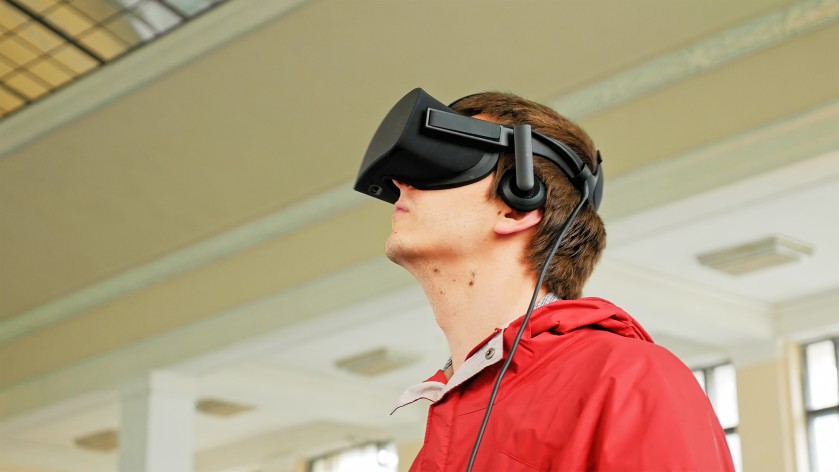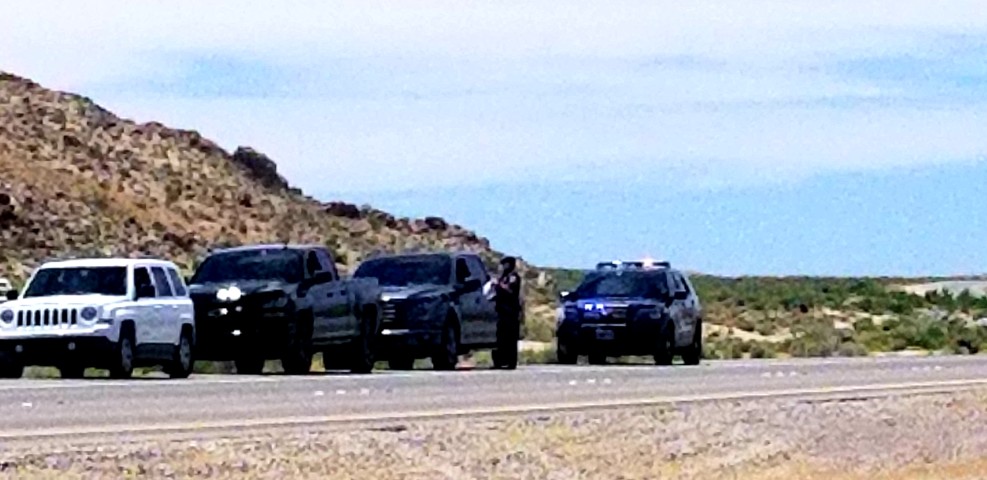Police Violence has Grown, and We Need to Find Answers. What About Virtual Reality/ Augmented Reality?
Police violence in the United States is the unjustified or excessive and often illegal use of force against civilians by U.S. police officers, ranging from beatings to mayhem, torture, and even murder and other forms of mistreatment seem to be growing during the past years, analysis has shown that the probability of being lethally injured by the police officer is generally defined by race, gender, and age. Police violence is the leading cause of death for young men. Studies reinforce calls to consider police violence as a public health issue. The fact that citizens are exposed the state violence has terrible consequences for the racial groups in our country, our general health, and our democracy.

training police with virtual reality increases tolerance, exposure and can support efficiency by using biometrics
Critical efforts have been made to reform how the police are being trained, collect data on procedures, designing and deliver interventions that reduce the chances that police will commit errors in critical situations.
Interventions are being prompted to several police departments to determine how well they work through research and collect and organize data on the police officer’s behavior and the police department work culture.
In 2015, a scientific review recommended policy changes that improve officer wellness, training, and operations oversight.
Understanding and changing officer behavior have professionals from various fields assisting agencies by collecting, reporting, and understanding behavioral data of their officers—data that will help shape changes in future policies and reduce police violence.
Together with the National Justice Database, a nationwide effort has been made to put together all data on police behavior; this information comes from around a hundred police departments and represents one-third of the country’s population. Extensive work has been done to organize all this data, including thousands of entries on the use of police force, searches, and police stops; this can vary from one agency to another, allowing researchers to make comparisons and understand the most significant trends.
Reporting data on the behavior of police in different ways can paint a very other picture about whether racial disparities exist or not. For example, some departments consider the unholstering of a gun as unnecessary use of force while others do not. So, it’s paramount to get this information correctly.
For the screening of officer candidates, professionals have worked to adapt the police selection process to address the issue of implicit bias.
In May 2020, the death of George Floyd initiated proposals to reform police procedures and training. Some of those reforms proposed urgent adjustments to the law enforcement training programs.
Some agencies in the country, like the Sacramento Police Department in California, are now utilizing technology more than in past years as part of their training reform, technology like virtual reality, they do this by taking elements from recent controversial shootings and implementing such elements into virtual reality training programs that focus on relevant topics such as implicit bias and de-escalation. The scenario possibilities are practically limitless; different scenarios can be created like responding to a domestic abuse call, or maybe an active shooter in an office or school, and even dealing with a mentally ill or agitated individual. All the skills under scrutiny today are practiced and developed, such as the ability to defuse and de-escalate, communication techniques, and appropriate use of force. The police department can quickly create these scenarios right after a recent incident. Another example is the Police department in Phoenix, Arizona, using virtual reality technology for empathy training.
Today’s virtual reality platform’s portability and small size have made it a viable solution to small municipal departments with a limited budget, where maintaining consistent training is complex. Portable virtual reality systems can be set up in any open, average-size room in about 15 minutes by practically anyone. The number of person-hours a virtual reality program can save is worth considering.

recreating situations of high stress for police officers can educate, prepare, and ultimately develop an efficient and empathetic police force
Compared to life simulation training, the real-world feeling that virtual reality creates is shocking.
Virtual reality training will never replace real experience, but it can feel more real than live, staged simulations. Because it creates the same responses as the actual incident, trainees must use their skills and technique to go past the confusion, over-reaction, and sensory stimulus they’re presented with.
Another technology that police detectives can use is augmented reality to help them analyze their environment gather and record information, re-create and map out crime scenes. Now law enforcement agents can virtually return to the crime scene and view the markers placed and information gathered. There are now programs that assign police officers in the field by showing them maps with the crime scenes in augmented reality and digitizing the evidence gathering process.
Another possible augmented reality application for policing is, for patrol purposes, language translation, data on cultural customs and traditions and other valuable applications; notification of officers of any local situation and communicating protective measures; and patrol car operator personal information and regional traffic management information on a portable display, as these technologies aren’t as immersive as virtual reality, thereby allowing officers to maintain awareness of what’s going on around them.
Augmented reality is also used for mission management for airborne law enforcement; this technology allows helicopter law enforcement officers to view addresses, streets, businesses, infrastructure, where vehicles are located, and other information directly on top of the video display of helicopters in real-time. The augmented reality visualization on one single display provides law enforcement officers a comprehensive view that can assist in high-risk situations.
In the near future, augmented reality could also give police officers real-time information that could potentially reduce unnecessary traffic stops and reduce tense interactions between law enforcement officers and law-abiding citizens.
Accountability would increase, and the margin of error would decrease; the mishandling of evidence would also drop using augmented reality and virtual reality technologies.
We may never see police officers in our country using augmented reality glasses to identify people in real-time; augmented reality is still finding other uses. Aiding criminal investigations is the one area where augmented reality seems to have more significant potential.
With these technologies, law enforcement officers will quickly analyze a crime scene and review hypotheses about what may have occurred in many different scenarios.
Biometric monitoring is also a helpful tool currently in use by law enforcement systems; this technology can monitor stress during officers’ duties and reveal valuable information on their performance. In the future reading, an officer’s biometrics could save their lives in case of an emergency or a shooting and could lead to an exchange between a police officer and medical or psychological professionals developing a process that can lead to a longer and healthier life for them.
Stress causes accidents, suicides, and sometimes some types of cancer; reducing this stress could potentially save a lot of careers by decreasing injuries and career-ending accidents.
Some law enforcement systems currently use the technology to measure the correlation between a polices officers’ duties and the stress he’s experiencing.
Biometric monitoring can help identify the causes of stress and determine an effective treatment plan.
This can be done if an officer’s activities throughout the day are synchronized with his biometric readouts. Body-worn camera technology could already accomplish this task. Still, this technology would only provide data that could correlate the activity the officer is doing and the stress he is experiencing, not to cause. Further analysis and a psychologist would be needed to explain the correlation between the pressure and the experienced events.
Privacy concerns are one of the most significant challenges that biometric programs would have to face; officers would be worried about reviewing their private medical information and who and why to have access to it. Therefore, the data stored in the programs of this type should only be accessed by the individual officer and is healthcare professional, and together with this information, determine the causes of stress and how to treat them; this data could also help medical and psychological professionals develop a treatment plan for each officer.
Another potential use for monitoring biometric data is to identify the number of times an officer feels stress or experience an increase in their adrenaline levels; this could also help police officers to recognize and learn these increases in adrenaline and learn to manage them, enhancing their performance. Elite athletes can control their adrenaline levels to perform better and to know the signs when their adrenaline levels are getting too high. At this point, athletes are challenging calming techniques that can also be tough for officers to reduce their adrenaline levels and keep in optimal working conditions, optimizing their performance.
The necessary elements needed for a law enforcement biometric monitoring program already exist, monitoring systems are being used in the mining industry to advise when engineers are having health issues when the inside of mine, on the other hand, the military industry has developed a disposable patch that sense and help monitor stress levels of a soldier in the field. Many of the necessities for this type of system have been worked out by developing body-worn cameras.
What is a possible future for policing?
The everyday use of virtual reality and augmented reality is increasing, backed by investments from many tech companies. With the development of augmented reality glasses, virtual reality headsets, and biometric devices evolving and becoming more cost-effective, the everyday use of these technologies in policing and law enforcement is only at its beginnings.
by Andrew G.





